Who is Mustafa Kemal Atatürk?

Who is Mustafa Kemal Atatürk?
Mustafa Kemal Atatürk was born in 1881 in a three-story pink house on Islâhhâne Street, Kocakasım Mahallesi, in Thessaloniki. His father was Ali Rıza Efendi and his mother was Zübeyde Hanım. His paternal grandfather Hafız Ahmet Efendi was one of the Kocacık Yörüks who settled in Macedonia from Konya and Aydın in the XIV-XVth centuries. His mother Zübeyde Hanım was the daughter of an old Turkish family settled in Langaza, a town near Thessaloniki. Ali Rıza Efendi, who worked as a militia officer, a clerk of the Evkaf and a timber merchant, married Zübeyde Hanım in 1871. Four of Atatürk’s five siblings died at a young age; only Makbule (Atadan) lived until 1956.
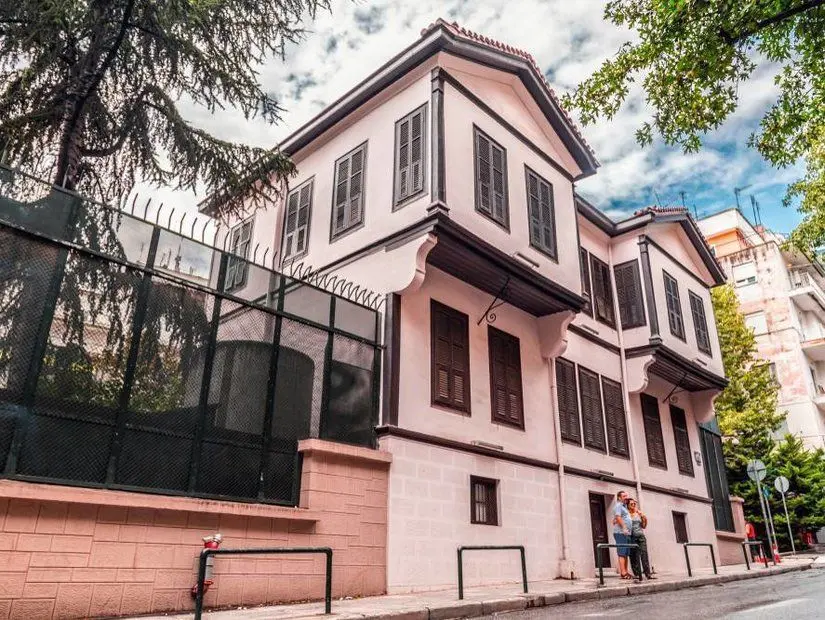
When young Mustafa reached the age of education, he started his education at Hafız Mehmet Efendi’s neighborhood school, and then transferred to Şemsi Efendi School upon his father’s request. In the meantime, his father passed away (1888). After staying with his uncle in Rapla Farm for a while, he returned to Thessaloniki and finished his schooling. He enrolled in the Selânik Mülkiye Rüştiyesi. Shortly after, in 1893, he entered the Military Rüştiye. At this school, his math teacher Mustafa Bey added “Kemal” to his name. In 1896-1899, he graduated from Manastır Military Idadisi and started his education at the Military Academy in Istanbul. In 1902, he graduated with the rank of lieutenant and continued his education at the War Academy. On January 11, 1905, he graduated from the Academy with the rank of captain.
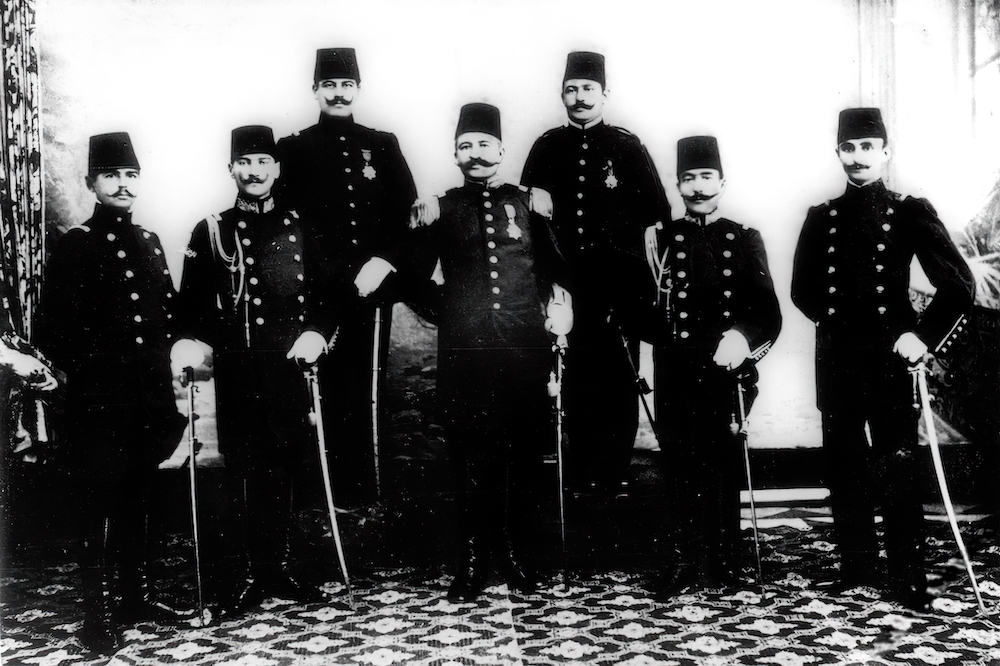
He served in the 5th Army in Damascus between 1905 and 1907. In 1907, he was promoted to lieutenant colonel (senior captain). He was assigned to the III Army in Monastir. On April 19, 1909, he served as Chief of Staff in the Movement Army that entered Istanbul. In 1910, he was sent to France. He participated in the Picardie Maneuvers. In 1911, he started to work under the General Staff in Istanbul.
In 1911, during the war that started when the Italians attacked Tripolitania, Mustafa Kemal took part in Tobruk and Derne with a group of his friends. On December 22, 1911, he won the Battle of Tobruk against the Italians. On March 6, 1912, he was appointed commander of Derne.
When the Balkan War started in October 1912, Mustafa Kemal joined the war with the troops in Gallipoli and Bolayır. He made great contributions to the recapture of Dimetoka and Edirne. In 1913, he was appointed Attaché to Sofia. He was promoted to lieutenant colonel in 1914. His attachment duty ended in January 1915. Meanwhile, World War I had started and the Ottoman Empire was forced to enter the war. Mustafa Kemal was assigned to Tekirdağ to form the 19th Division.
Who is Mustafa Kemal Atatürk?
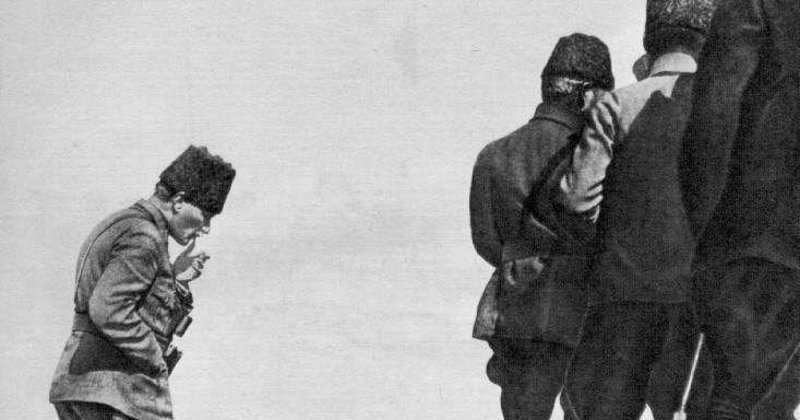
In World War I, which started in 1914, Mustafa Kemal wrote an epic of heroism in Çanakkale and made the Allied Powers say “Çanakkale is impassable!”. On March 18, 1915, when the British and French navies trying to cross the Dardanelles suffered heavy losses, they decided to land troops on the Gallipoli Peninsula. The 19th Division under the command of Mustafa Kemal stopped the enemy forces landing in Arıburnu at Conkbayırı on April 25, 1915. Upon this success, Mustafa Kemal was promoted to colonel. On August 6-7, 1915, the British attacked again in Arıburnu. Anafartalar Group Commander Mustafa Kemal won the Anafartalar Victory on August 9-10. This victory was followed by Kireçtepe on August 17 and II Anafartalar on August 21. The Turkish nation, which lost approximately 253,000 martyrs in the Gallipoli Wars, managed to preserve its honor against the Allied Powers. Mustafa Kemal’s order to his soldiers “I do not order you to attack, I order you to die!” changed the fate of the front.
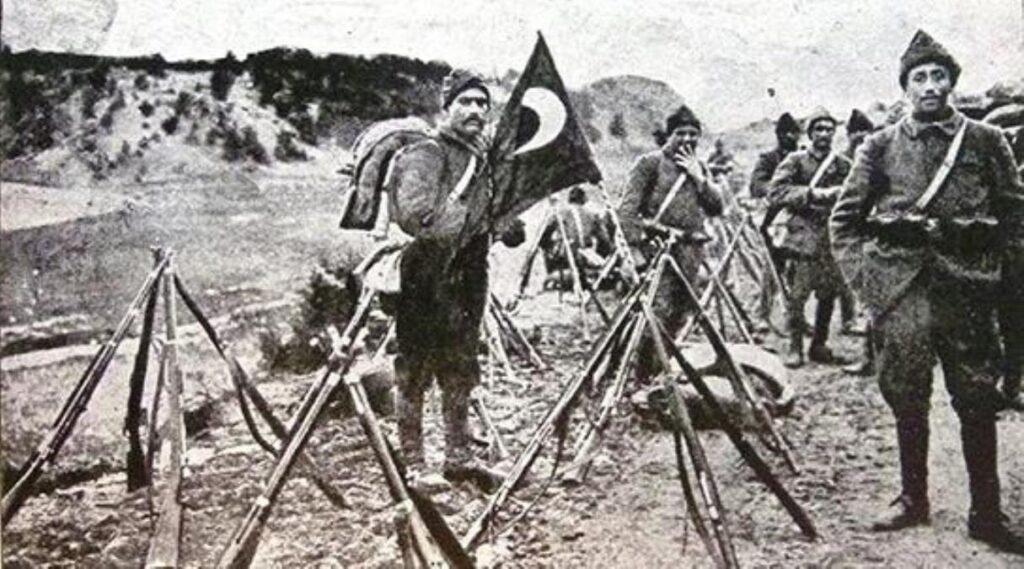
Mustafa Kemal served in Edirne and Diyarbakır in 1916 after the Çanakkale Wars. On April 1, 1916, he was promoted to major general. He fought against Russian forces and helped retake Muş and Bitlis. After short-term assignments in Damascus and Aleppo, he came to Istanbul in 1917. He traveled to Germany with his guardian Vahidettin Efendi and made inspections at the front. He fell ill after this trip. He went to Vienna and Karisbad for treatment. On August 15, 1918, he returned to Aleppo as the commander of the 7th Army. He fought successful defensive battles against the British forces on this front. One day after the signing of the Armistice of Mondros, on October 31, 1918, he was appointed as the Commander of the Lightning Armies Group. Upon the abolition of this army, he came to Istanbul on November 13, 1918 and took office in the Ministry of War.

Who is Mustafa Kemal Atatürk?
After the Armistice of Mudros, when the Allied Powers began to occupy the Ottoman armies, Mustafa Kemal sailed to Samsun on May 19, 1919 as the 9th Army Inspector. On June 22, 1919, with the circular he issued in Amasya, he declared that “the independence of the nation will be saved by the determination and resolve of the nation” and called for the Sivas Congress to meet. Between July 23 and August 7, 1919, he convened the Erzurum Congress and between September 4 and 11, 1919, the Sivas Congress and determined the path to be followed for the salvation of the homeland. On December 27, 1919, he was enthusiastically welcomed in Ankara. On April 23, 1920, with the opening of the Grand National Assembly of Turkey, an important step was taken towards the establishment of the Republic of Turkey. Mustafa Kemal was elected President of the Assembly and the Government. The Grand National Assembly of Turkey began to adopt and implement the laws necessary for the successful outcome of the War of Independence.

The Turkish War of Independence began on May 15, 1919 when the first bullet was fired against the enemy during the Greek invasion of Izmir. On August 10, 1920, the militia forces, called Kuvâ-yi Milliye, fought against the victorious states of World War I, which shared the Ottoman Empire among them by signing the Treaty of Sevres. The Grand National Assembly of Turkey established the regular army and ensured the integration of the Kuvâ-yi Milliye and the army and ended the war with victory.
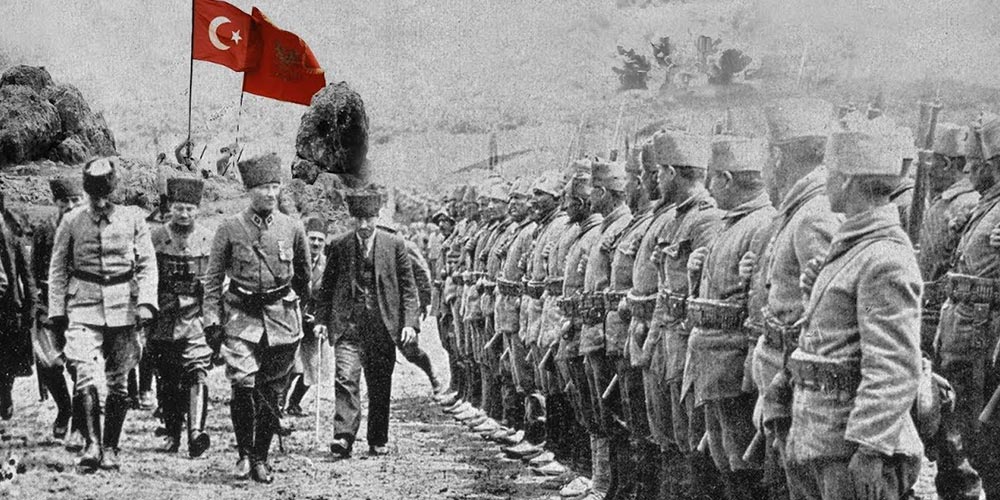
The important stages of the Turkish War of Independence under Mustafa Kemal are as follows:
- The liberation of Sarıkamış (September 20, 1920), Kars (October 30, 1920) and Gyumri (November 7, 1920).
- Çukurova, Gazi Antep, Kahraman Maraş Şanlı Urfa defenses (1919-1921)
- I. Inonu Victory (January 6-10, 1921)
- II. Inonu Victory (March 23-April 1, 1921)
- Sakarya Victory (August 23-September 13, 1921)
- The Great Offensive, the Battle of the Commander-in-Chief and the Great Victory (August 26, September 9, 1922)
After the Victory of Sakarya, on September 19, 1921, the Turkish Grand National Assembly awarded Mustafa Kemal the rank of Field Marshal and the title of Gazi. The War of Independence ended with the Treaty of Lausanne signed on July 24, 1923. Thus, there was no obstacle left for the establishment of a new Turkish state based on national unity on the territory of Turkey, which had been dismembered by the Treaty of Sevres and left to the Turks a homeland the size of 5-6 provinces.
On April 23, 1920, the opening of the Grand National Assembly of Turkey in Ankara heralded the establishment of the Republic of Turkey. The Assembly’s successful management of the Turkish War of Independence accelerated the establishment of the new Turkish state. On November 1, 1922, the caliphate and the sultanate were separated and the sultanate was abolished. Thus, administrative ties with the Ottoman Empire were severed. On October 13, 1923, the Republic was proclaimed and Atatürk was unanimously elected the first president. On October 30, 1923, the first government of the Republic was formed by İsmet İnönü. The Republic of Turkey began to rise on the foundations of “Sovereignty belongs to the nation unconditionally” and “Peace at home, peace in the world”.
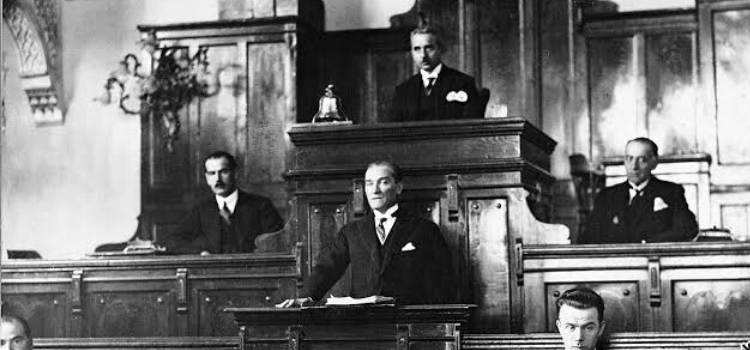
Atatürk made a series of revolutions in order to “raise Turkey to the level of contemporary civilization”. These revolutions can be categorized under five headings:
Political Revolutions:
- Abolition of the Sultanate (November 1, 1922)
- Proclamation of the Republic (October 29, 1923)
- Abolition of the Caliphate (March 3, 1924)
Social Revolutions:
- Giving women equal rights with men (1926-1934)
- Hat and dress revolution (November 25, 1925)
- Closure of dervish lodges and tombs (November 30, 1925)
- Surname law (June 21, 1934)
- Abolition of epithets and titles (November 26, 1934)
- Adoption of international clocks, calendars and length measurements (1925-1931)
Legal Revolution:
- Abolition of the Mecel (1924-1937)
- Transition to secular legal order by enacting the Turkish Civil Code and other laws (1924-1937)
Revolutions in Education and Culture:
- Unification of education (March 3, 1924)
- Adoption of new Turkish letters (November 1, 1928)
- Establishment of the Turkish Language and History Institutions (1931-1932)
- Regulation of university education (May 31, 1933)
- Innovations in fine arts
Revolutions in the Field of Economy:
- Abolition of Ashar
- Encouraging farmers
- Establishment of model farms
- Establishment of industrial organizations by enacting the Law on the Encouragement of Industry
- Implementation of the First and Second Development Plans (1933-1937), equipping the country with new roads
Surnamed Atatürk

In accordance with the Surname Law, Mustafa Kemal was given the surname “Atatürk” by the Turkish Grand National Assembly on November 24, 1934.
Atatürk was elected as the President of the Grand National Assembly of Turkey on April 24, 1920 and August 13, 1923. This presidency was at the level of the State-Government Presidency. On October 29, 1923, the Republic was proclaimed and Atatürk was elected the first president. According to the Constitution, presidential elections were renewed every four years. In 1927, 1931 and 1935, the Turkish Grand National Assembly re-elected Atatürk as president.

Atatürk often traveled around the country and inspected state activities on the spot. He gave orders to those in charge about problems. As President, he hosted foreign heads of state, prime ministers, ministers and commanders who visited Turkey.
On October 15-20, 1927, he delivered his great speech on the War of Independence and the founding of the Republic, and on October 29, 1933, he delivered his 10th Anniversary Speech.

Atatürk lived in simplicity in his private life. On January 29, 1923, he married Latife Hanım. They went on many trips abroad together. This marriage lasted until August 5, 1925. Atatürk, who loved children very much, adopted Afet (İnan), Sabiha (Gökçen), Fikriye, Ülkü, Nebile, Rukiye, Zehra and a shepherd named Mustafa. He took children named Abdurrahim and İhsan under his care. He prepared a good future for those left behind.
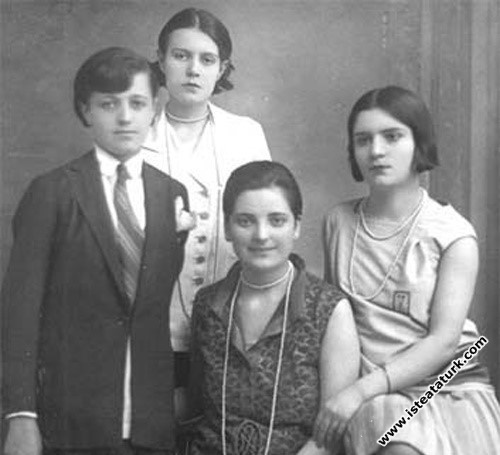
In 1937, he donated his farms to the treasury and some of his immovable properties to Ankara and Bursa Municipalities. He allocated a share of his inheritance to his sister, his foster children and the Turkish Language and History Institutions. He loved reading, listening to music, dancing, horseback riding and swimming. He was very interested in Zeybek dances, wrestling and Rumelia folk songs. He enjoyed playing backgammon and billiards. He loved his horse named Sakarya and his dog named Fox. He had built a rich library. He would invite statesmen, scientists and artists to his dinners and discuss the problems of the country. He took care to dress clean and neatly. He loved nature very much. He often visited Atatürk Forest Farm and participated in the work himself.
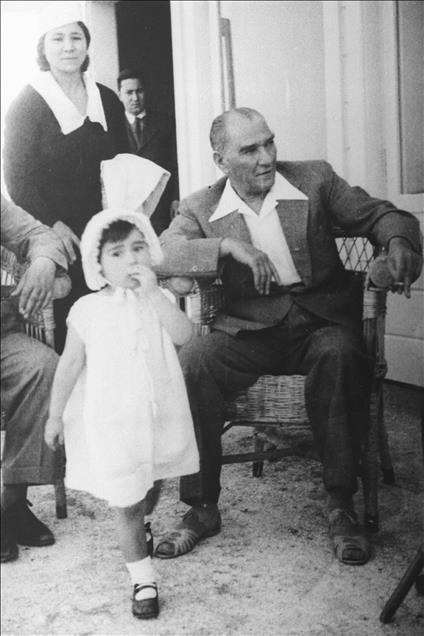
He spoke French and German. On November 10, 1938 at 9.05 pm, he died at Dolmabahçe Palace in Istanbul, unable to recover from the cirrhosis he had contracted. His body was buried in Ankara Ethnography Museum, his temporary resting place, with a ceremony held on November 21, 1938. After the construction of Anıtkabir, his body was buried in his eternal resting place with a magnificent ceremony on November 10, 1953.

Who is Mustafa Kemal Atatürk?






